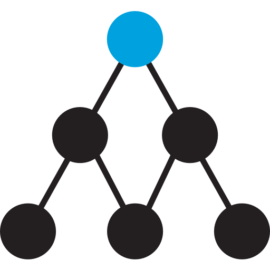Private GPTs: The New Era of Open Source LLMs
Open Source Large Language Models (LLMs) are poised to usher in a transformative wave for Enterprise Generative AI Initiatives, emphasizing privacy and cost-effectiveness.
Drawing parallels with the rise of Open Source Cloud Platforms like OpenStack, Open Source Large Language Models (LLMs) are poised to usher in a transformative wave for Enterprise Generative AI Initiatives, emphasizing privacy and cost-effectiveness. These publicly accessible AI models will incentivize enterprises to craft custom solutions aligned with their unique objectives. This movement promises not only to spur innovation but also to champion transparency and accountability in AI deployments. By harnessing Open Source LLMs, businesses can substantially curtail expenses tied to proprietary AI infrastructures. This technological democratization will empower even mid-tier enterprises to embrace AI, amplifying the collective AI ecosystem. Furthermore, Open Source LLMs can directly address privacy apprehensions by granting users autonomy over their data, eliminating dependence on proprietary systems.
User Experience Dynamics
The pivotal query remains: Can these models rival the user experience and efficiency of the industry giants? OpenAI, with its expansive market influence, is fervently expanding its ecosystem. A plethora of SaaS applications, termed thin-wrappers, have emerged, leveraging OpenAI as their foundational platform. These applications, by interfacing with OpenAI's GPTs, have diversified the spectrum of AI-powered services. However, with the advent of Open Source LLMs, businesses can architect their bespoke applications, fine-tuned to their distinct prerequisites.
Open Source LLMs empower enterprises to design user experiences that resonate with their clientele, unbounded by third-party limitations. This flexibility also facilitates swift iterations based on user insights and demands.
Yet, it's imperative to acknowledge that rivaling the user experience of seasoned players is a formidable challenge.
Navigating Privacy Waters
Echoing the initial trepidation enterprises harbored towards Public Clouds, privacy issues will resurface. While techniques like RAG offer data utilization, transparency regarding model data processing on public platforms like OpenAI will remain a concern for enterprise applications. Open Source LLMs address this by bestowing users with unfiltered control over their data. This ensures data autonomy, devoid of proprietary platform restrictions. However, the open-source nature also mandates stringent data governance to safeguard sensitive information and comply with privacy norms.
Cost Implications
Open Source LLMs' allure lies in their cost efficiency. Yet, overheads like GPU procurement and availability might offset the cost benefits of Open Source LLMs. Despite the models being cost-free, the computational prowess needed for training them is substantial. The demand for GPUs in sectors like gaming and cryptocurrency further escalates their cost and scarcity. Therefore, a holistic cost assessment for Open Source LLM deployment should factor in these infrastructural expenses.
Nevertheless, Open Source LLMs present a cost advantage over proprietary counterparts, especially when accounting for licensing and other associated fees. Customizability also ensures resource optimization, further economizing operations.
Innovative Solutions on the Horizon
Pioneers like Numenta are innovating to match CPU performance with GPUs, potentially lowering the entry barriers for Open Source LLM deployment in terms of cost, paving the way for "Private GPTs." Concurrently, other trailblazers are optimizing LLM performance on CPUs, diminishing the dependency on high-priced GPUs. This not only trims costs but also broadens LLM accessibility to a diverse range of enterprises.
Predibase, is addressing the infrastructural challenges of Open Source LLMs, advocating for optimized models that are leaner, more affordable, and faster. Their ethos, as per their website, emphasizes: "Fine-tune task-centric LLMs that outshine inflated alternatives from commercial vendors. Pay only for essentials."
Our Perspective
The trajectory of Open Source LLMs mirrors that of Open Source Cloud Platforms. We anticipate a burgeoning ecosystem catering to infrastructure and developer experience for AI-centric applications using Open Source LLMs. Yet, the adoption rate remains an enigma.
Historically, enterprises gravitated towards building their Private Clouds, lured by cost benefits, only to later discern their inability to match the experience of Public Clouds. Will history repeat itself, or will this narrative diverge?
Resources



Podcasts




